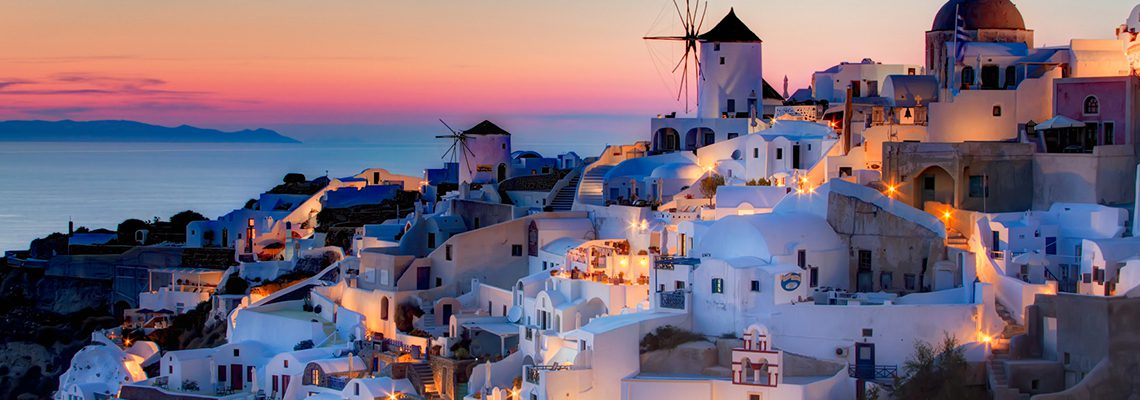
Crete is the largest island in Greece and the place that has it all: Remnants of past civilisations, glorious beaches, impressive mountainous landscapes, fertile valleys and steep gorges, and a rich gastronomic culture. It is a micro universe of treasures to discover for a lifetime! There are four prefectures in Crete – Chania, Rethymno, Heraklion and Lasithi. Chania is the westernmost prefecture of Crete with much of its land dominated by the White Mountains and its famous National Park, wrapped around Samaria Gorge, the biggest and most imposing gorge in Greece.
The Park is teeming with a rich kaleidoscope of flora and fauna for nature lovers. The city of Chania, also the prefecture’s capital, has been unchanged since Venetian rule. There are many religious and cultural festivals to partake such as the Chestnut Festival in Élos, the Rosewater Festival in Foúrni, and the Wine Festival in Voúves. Many sandy beaches with azure waters are around the west of the city forming the NATURA network. For truly breathtaking experience, head for the islet of Elafronissi, a beach with crystal clear water and purest sand dunes. Must try are the local traditional specialties such as eggs with stáka, Cretan kalitsoúnia, lamb served with spiny chicory, dácos, snails boubouristí, haniótiko bouréki, kserotígana wedding cookies, dry bread wreaths, yraviéra cheese, sweet smelling anthótyros from Sfakiá, fresh stáka butter for the Cretan wedding rice, and roasted goat.
Accompany your dinner with a glass of deep-red Cretan wine, the divine marouvás, or drink after your meal an ice-cold rakí, a traditional Cretan spirit distilled from pomace, with a delicate aroma of ripe grapes. prefecture, sits between White Mountains and Mt Psilorítis and is a remote and self-sufficient mountainous region. The city boasts of one of the best preserved medieval towns in Greece, with Venetian fortification works, orthodox and Catholic churches, mosques, grand mansions, arches and cobblestone streets, all creating a fairy-like atmosphere. Beside the beautiful natural landscape of valleys, gorges and rivers, there are numerous caves and one of them, Idéon Ándron’s cave was where Zeus was raised, according to mythology. Rethymno is also an ancient inhabited area, with archaeological finds reaching as far back as the Stone Age. Visit traditional settlements like Ádele, Anóyia, Rústika, Garázo and Chromonastíri to have a feel of their authentic and original Cretan essence. There are also sun-soaked beaches on the north coast (Cretan Sea) and the south coast (Libyan Sea) where beaches are pristine and waters azure. Local culinary delights are not to be missed – goat cooked with tomatoes, hilopítes (homemade pasta) and snails with vegetables –always accompanied with a shot of local tsikoudiá.
Heraklion is the largest and most densely populated prefecture, and it is also Crete’s capital. It nestles between Mt Psilorítis and Dikti with a unique mix of Byzantine remnants, Venetian constructs and Ottoman structures. The renowned medieval fortress Koulés overlooks the harbour. The Morosini Fountain with four stone lions is a well-known sights in the city. The reconstructed Lóggia across the Fountain used to house the Venetian headquarters and today it houses the Town Hall. Many old churches dotted the city’s streets, and absorb the bustling ambience of hive cafes, restaurants and shops around Lion, Eleftheríou Venizélou and Kornárou squares. Nature lovers and hiking enthusiasts rejoice – the stunning gorges, cavernous caves and natural habitats are breathtaking landscapes to enjoy.
Being an ancient land, many archaeological sites dotted Heraklion, and numerous thematic museums exhibit Crete’s glorious past as well as modern culture and lifestyle. Beachgoers are spoiled for choice along the coastline of Heraklion – Amnissós, Ayía Pelayía, Kalí Liménes, the beaches of Mália, Cháni Kokkíni, Liménas Hersoníssou, Mátala and Ammoudára. The Wine Festival at Daphnés, organised throughout the first fortnight of July, is dedicated to the Daphnés’ wine and Cretan gastronomy. Sample snails cooked with groats, rabbit with aromatic herbs, pork with celeriac, kaprikó pork grilled with herbs, kalitsoúnia (a pastry filled with cheese) and kserotíyana (honey dipped spiral pastries),and are complemented with local wine.
Lasithi is the easternmost region of Crete and the least mountainous. There are four semi-urban towns – Áyios Nikólaos, Ierápetra, Sitía and Neápoli. Áyios Nikólaos has a famous cosmopolitan resort Eloúnda with luxury facilities for the jet setters. Besides Eloúnda, there are four local villages – Páno and Káto Eloúnda, Mavrikianó and Skisma. Ierápetra is the largest town in Lasithi and the sunniest place in Europe! Many interesting sightseeing venues are the 19th century mosque in the old town, the 13th century Kalés Venetian fortress at the port entrance, the Archaeological Collection housed in the building of the former Ottoman School at the City Hall square, and some old churches. Sitía is a port town in northeastern Crete. This laid-back town is isolated, and to get there you need to travel through magnificent countryside and dramatic gorges. Along the waterfront, the sea is inviting for beachgoers.
The beautiful harbour has small colourful fishing boats, tavernas and cafes where tourists can mingle with locals as they trade gossip. Also visit the Venetian Kazárma fortresswhere the Kornária festival is held during summer, the Archaeological and the Folklore museums. Not to be missed are Stavroménos, a scenic village that offers a beautiful view to Sitía bay and the villages of Sandáli with the plane-trees and the running waters. Neápoli was Crete’s capital until 1904, and today it is a small picturesque town nestled in an olive grove valley with excellent urban planning and well-preserved neoclassical buildings. It has an intriguing archaeological collection, and do visit the Folklore Museum, Byzantine monasteries especially the 15th century Monastery of Kremastá, the quaint traditional villages of Síssi, Nikithianós, Houmeriákos, Límnes, Latsída, Vrýses and Vrahássi and the Mílatos Cave.



